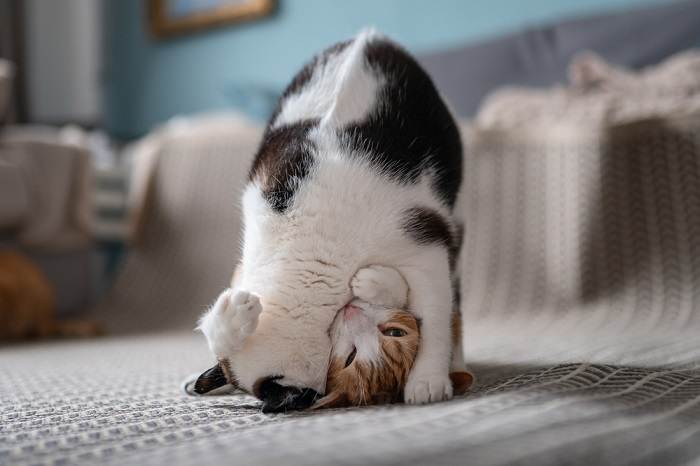
COVID-19 has heightened everyone’s awareness of infectious diseases, but rabies has been around for thousands of years.
It is still one of the world’s most feared viral diseases for two simple reasons.
First, it crosses the species barrier, infecting every different warm-blooded animal, including humans, making it the world’s most significant zoonotic disease.
And second, it is a fatal disease: when an infected animal (or human) shows signs of rabies, there is virtually nothing that can be done to save them.
Rabies is present across most of the world, in over 100 countries, including the continents of America, Asia, and Africa, as well as some parts of Europe. Around 60,000 people die from rabies every year.
The virus is generally present in wildlife reservoirs (such as wild dogs, foxes, wolves, and bats), spreading intermittently to domestic pets (both dogs and cats).
The specific wild animal reservoir depends on the location.
For example, in the United States, skunks and raccoons are common hosts.
A small number of countries have rabies-free status, including the United Kingdom, Ireland, Australia, New Zealand, Iceland, and Japan, as well as Antarctica, some Pacific Islands, and certain parts of Scandinavia. These areas have strict controls on the importation of animals to prevent the introduction of rabies into their native wildlife and domestic animal populations..
There are variants of the rabies virus, and cats are less prone to the canine version but may be more susceptible to some wildlife-derived rabies viruses.
How Cats Get Rabies

Rabies is transmitted through the saliva. A cat may catch rabies if bitten by an infected cat during a fight.
The sequence of events in a rabies virus infection is as follows.
- A cat is bitten by an animal carrying the rabies virus in their saliva. Cat bites are common whenever cats fight.
- The bite wound is therefore infected with an inoculation of the rabies virus.
- The rabies virus then multiplies locally, as well as travelling along the nerves from the site of the bite to the spinal cord, and then on upwards to the central nervous system, including the brain.
- The rabies virus continues to replicate in the brain, and viral particles travel down another nerve into the parotid salivary gland, causing the animal’s saliva to become full of viral particles.
- The rabies virus in the brain causes physical changes that bring about behavioural aberrations, including aggression to other animals and people.
- As part of this aggressive behaviour, a cat is likely to bite another animal or a person, transmitting the rabies virus to the next victim.
One of the complexities of feline rabies is that the virus is present in the saliva of an infected animal for 1 – 5 days before they show any rabies symptoms.
This means that a human victim may not be aware that they have been bitten by a rabid animal, because the cat appears normal at the time of the bite.
Symptoms of Rabies in Cats
There are two broad ways that rabies can present in cats: “furious” and “paralytic”, with the associated clinical signs listed below.
Both types start in the same way, with a so-called “prodromal” phase, with affected cats showing loss of appetite, uncharacteristic behavioral changes, edginess, and sometimes repeated licking at the site of the animal bite. A high body temperature may be noted.
- This is most commonly followed by furious stage of rabies, which is the feline equivalent of a classic “mad dog”, with serious aggression and bizarre, uncharacteristic behaviour such as attacking objects in their environment. Other neurological signs may also be seen, including disorientation, seizures, trembling, and incoordination.
- The second type or stage of rabies is the so-called “paralytic” form, and while this can develop instead of the “furious” form (this more commonly happens in dogs), in cats, it often follows the furious form as the “paralytic stage”, developing 2 – 4 days later. The neurological signs move from being active to passive: paralysis starts to develop, with excessive drooling and salivation because of an inability to swallow, congested mucous membranes, and many other signs linked to progressive loss of muscle function, leading to death a few days later when the respiratory muscles become paralysed.
Diagnosis of Rabies in Cats
If your cat shows any of the signs listed above, it’s important that you take them to a veterinarian for a full assessment.
Rabies diagnosis cannot be definitively confirmed in a living animal, so unfortunately it is only possible to have strong suspicions based on the history (e.g. an unvaccinated cat) and the signs listed above, with euthanasia being carried out where rabies is strongly suspected.
After this has been carried out, an autopsy is needed, with brain tissue being sampled and tested in one of the following ways:
- Direct Fluorescent Antibody (DFA) Testing, also known as the fluorescent antibody test, uses antibodies that fluoresce under ultraviolet light: if these bind to brain tissue, this indicates the presence of the rabies virus. This is the standard form of testing in most countries.
- Direct, rapid immunohistochemical test (dRIT) is a newer type of test that can be carried out more easily in the field in parts of the world with less developed scientific laboratory infrastructure.
- Older, less used methods of diagnosis include histopathological examination of brain tissue, and the direct inoculation of live mice with tissue from the cat, monitoring the mice to see if they develop signs of rabies.
Rabies in Cats Treatment

Rabies cannot be treated: when the condition is strongly suspected, euthanasia is recommended for two reasons. First, when a cat has rabies, an uncomfortable death is the only possible outcome, making euthanasia the only humane option.
And second, a cat with rabies presents a serious risk to human health, so for the sake of human safety, euthanasia is necessary and may be enforced by disease control authorities such as CDC.
Conclusion
All cats in areas where rabies is present should be vaccinated regularly to protect them against this terrible, life-destroying disease.







